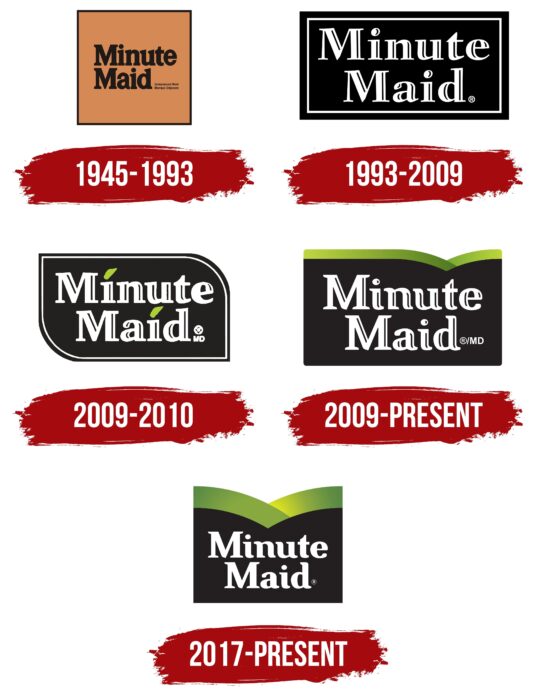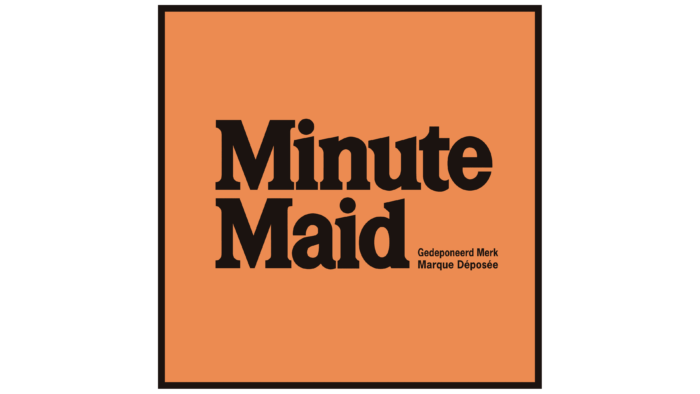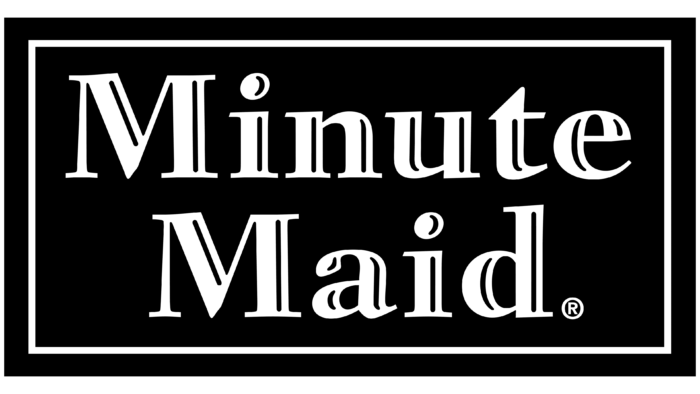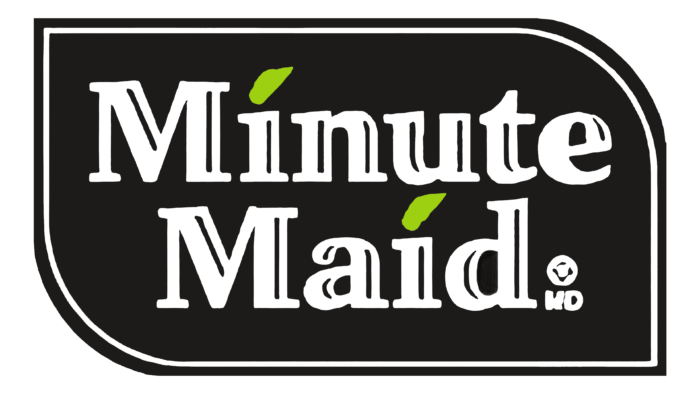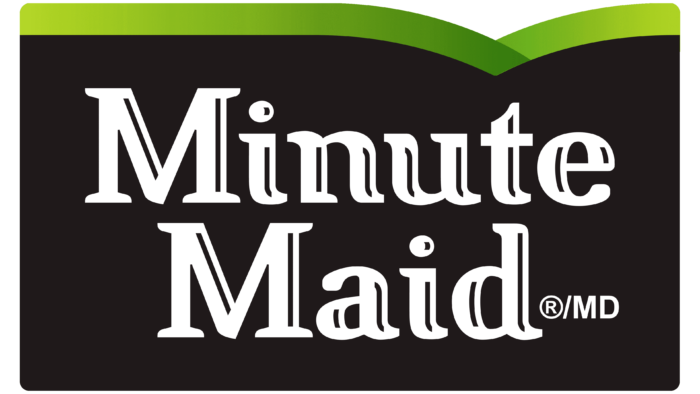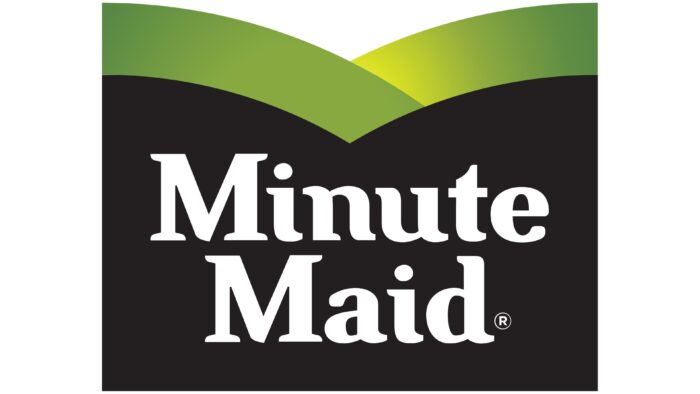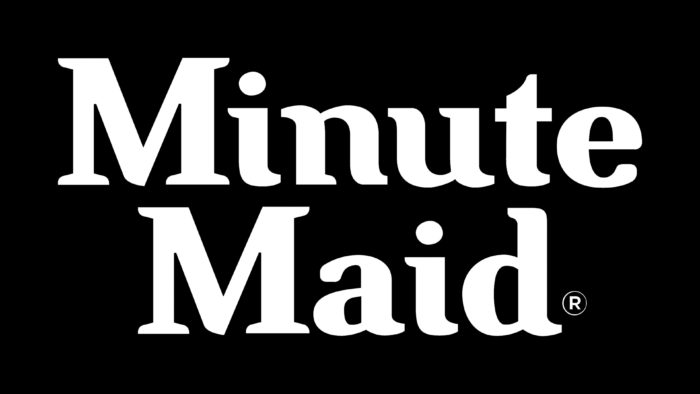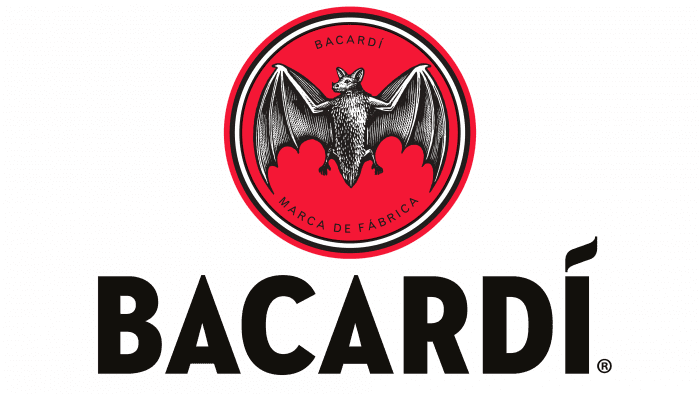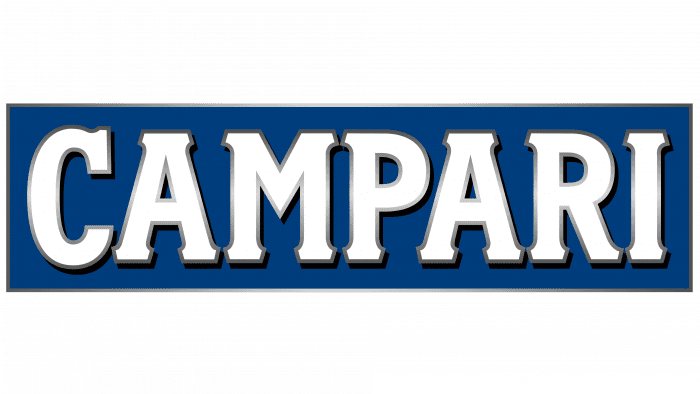The Minute Maid logo is like a box in which vitamin, delicious, natural juice concentrates are temporarily hidden. During storage, all useful substances remain. The emblem demonstrates how, after the “opening,” the ice is transformed into fragrant juice.
Minute Maid: Brand overview
| Founded: | 1945 |
| Headquarters: | Sugar Land, Texas, U.S. |
| Website: | minutemaid.com |
Meaning and History
Minute Maid was originally a project of the National Research Corporation, which decided in 1945 to provide dehydrated orange juice to the U.S. military. The new product was supposed to be in the form of an instant powder. But the company did not have time to carry out its plans. The war was over as soon as it incorporated Florida Foods Corporation to supply the juice and won the contract. The contract was terminated, causing the plant never to be completed, so NRC had to develop other tactics.
The organization abandoned the concept of powdered juices: it liked the idea of producing frozen concentrates better. The choice fell on orange, exotic fruit in demand in the United States. The advertising agency HA Loudon Advertising suggested the name Minute Maid for the drink, which was supposed to hint at a simple preparation of juice from concentrate. Later called Vacuum Foods Corporation, Florida Foods was renamed Minute Maid in 1949. This is how it became part of Coca-Cola ten years later. The new owner eventually expanded the product line and changed the brand logo several times to adapt it to modern times.
1945 – 1993
The first logo was a square of beige and brown with a black border. Inside, the word “Minute Maid” was written in the same black letters, divided into two lines, aligned on the left side. The designers chose a bold font with rectangular serifs and beveled tops. To the right of the second word were the small, barely noticeable inscriptions “Gedeponeerd Merk” and “Marque Déposée” – “Trademark” in Dutch and French.
1993 – 2009
At the beginning of the 1990s, the logo acquired a mournful look because a black rectangle replaced the square in a rather optimistic color with a white border. The brand’s name became white, and the developers changed the style. They gave preference to a high-contrast font with thin serifs and decorative lines, which gave the letters volume. Instead of long phrases, the registered trademark symbol in the form of an ‘R’ in a circle appeared next to the word ‘Maid.’
2009 – 2010
To make the design cheerful, the creators of the logo cut off two opposite corners of the rectangle: the upper right and the lower left. In addition, they swapped the dots above both “i’s” for green spots that mimic fruit leaves and slightly transformed the font. As a result, the letters became bolder and more rounded than they resembled juicy oranges or apples.
2009 – today
Continuing to experiment with shapes, the designers brought back the rectangular base, removed the white border, and brought back the standard round dots over the “i.” At the same time, they added two long green lines in the shape of hills on top so that the black part of the logo now symbolizes fertile soil and the green bands with a gradient represent plants. There are elegant tails and roundings at the bottom of the letters that visually soften the lettering. This logo continues to be used in the United Kingdom and the United States.
2017 – today
Taxi Studio developed Minute Maid’s modern visual identity in collaboration with Coca-Cola’s design department. Employees of the two companies had to unite the widest range of drinks with new branding standards. They divided all the products into four groups (Delight, Nutri, Refresh, and Essentials). They connected them with one logo, which occupied almost half the space on juice boxes and bottles after the redesign. Accordingly, the black quadrangle has been compressed slightly on the sides to be easily placed on narrow packages. The green stripes are now much wider than before, and the triangular notch is located exactly in the center. The lettering is almost unchanged – the designers only removed the dark glare from the letters.
Font and Colors
The green skyline symbolizes Minute Maid’s connection with nature because fresh fruits are the main component of the branded products. The black base represents the soil, where the plants grow and ripen. The logo is completed on the packages with the images of berries and fruits, which are part of the drinks.
A modified version of CA Texteron Heavy is used for the brand name. It is a geometric font with serifs, rounded elements, and contrasting thickness of strokes. The white lettering is inside a black rectangle, which challenges the modern world in which light colors dominate. Black for Minute Maid is a way to stand out from the competition, to show your premiums. The green gradient should connect the brand with nature demonstrate its strive for naturalness and naturality. In addition, fresh green shades look “juicy” delicious, which is what the drinks manufacturer seeks.
Minute Maid color codes
| Raisin Black | Hex color: | #231f20 |
|---|---|---|
| RGB: | 35 31 32 | |
| CMYK: | 0 11 09 86 | |
| Pantone: | PMS Neutral Black C |
| June Bud | Hex color: | #bfd741 |
|---|---|---|
| RGB: | 191 215 65 | |
| CMYK: | 11 0 70 16 | |
| Pantone: | PMS 380 C |
| Apple Green | Hex color: | #9ebb37 |
|---|---|---|
| RGB: | 158 187 55 | |
| CMYK: | 16 0 71 27 | |
| Pantone: | PMS 376 C |
| Olive Drab | Hex color: | #73962a |
|---|---|---|
| RGB: | 115 150 42 | |
| CMYK: | 23 0 72 41 | |
| Pantone: | PMS 370 C |
| Sap Green | Hex color: | #527e23 |
|---|---|---|
| RGB: | 82 126 35 | |
| CMYK: | 35 0 72 51 | |
| Pantone: | PMS 363 C |

